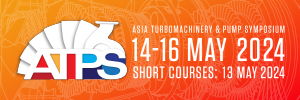Leak detection systems under scrutiny following Canada oil spill
The recent 200,000 litre Tundra Energy oil spill in Saskatchewan, Canada, has brought the effectiveness of currently employed oil pipeline leak detection systems into question.
The concerns about the problems in detecting pipeline leaks are particularly topical now, as Canada has approvals in place to expand the Trans Mountain pipeline and replace part of Line 3.
Additionally, US President Donald Trump has reapproved the Keystone XL pipeline, the construction of which was halted by the Obama administration and which is feared to cause leaks similar to the Tundra Energy case.
"The current leak detection [systems] companies use aren't particularly effective," Carl Weimer, executive director of the Washington-based Pipeline Safety Trust, told CBC News.
The US tracks pipeline data centrally, and a 2012 study for the Pipeline and Hazardous Materials Safety Administration found that only 17% of oil spills were detected in operator control rooms.
In Canada, similar tracking of pipeline leak discoveries was started by the National Energy Board only in 2015, but results already show that control rooms detected only 20 of the 128 leaks of oil, gas, or other substances since the programme started.
Small spills not detected
Alberta Energy Regulator does not track how leaks were discovered in pipes it oversees, although it does require companies to submit spill reports whenever an incident happens.
Reportedly, in Saskatchewan the provincial government also requests to know who submitted a spill report, but the report does not need to state how the leak was detected.
Still, in 2016 the Alberta regulator expressed its discontent that operators were not maintaining effective detection programmes after it found out that leak detection was a major contributor in eight of 23 pipeline spills since 2013.
"The investigations concluded that company personnel responsible for leak detection were not sufficiently trained or simply failed to recognise that a leak was occurring until several days after the leak had started," the AER said in a statement.
As an example of such a case, Enbridge took 17 hours in 2010 to shut down a pipeline after it was alerted of a leak, causing 3.3 million litres of crude oil to flow into the Kalamazoo River in Michigan, US, and making for the country’s largest inland oil spill.
According to Anthony Swift at the Natural Resource Defense Council in New York, leak detection systems can be relied on to detect only large-scale spills.
"It doesn't take long for a significant leak to become catastrophic for communities and the environment if not detected rapidly," said Swift.
Enbridge estimates that for its planned 760,000 barrels per day Line 3 replacement, its system can detect leaks of a minimum of 150,000l/h, approximately 3% of pipeline flow.
Kinder Morgan's Trans Mountain expansion should be able to detect leaks of 2-5% of flow, which works out to a minimum of 78,200 litres per hour based on the 590,000 barrel-a-day expansion.
New methods not used
Both companies have been testing new leak detection methods, such as vapour-sensing tubes, fibre-option temperature monitors, hydrocarbon-sensing cables, and acoustic systems, in a joint project launched in 2014.
However, neither of them has made the commitment to install these systems into their new pipelines and will instead rely on sensors measuring flow rate, pressure, temperature, and other indicators which are analysed in control rooms.
According to the NEB, both the Line 3 and Trans Mountain projects have acceptable leak detection systems in place and has left it up to the companies to determine if external systems need to be installed.
The companies said they need more time before deciding if they plan to go ahead with any of the new systems.
This article was written by Ilari Kauppila, editor at Fluid Handling International
















